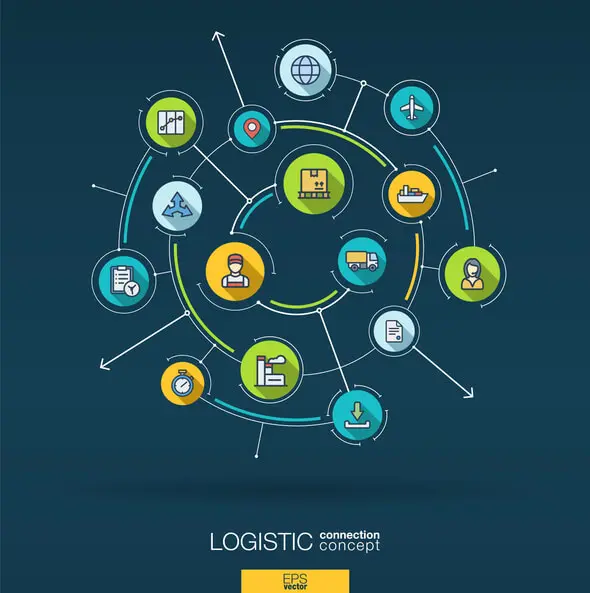Inventory management isn’t just a backend task—it’s the backbone of a successful Shopify store. Getting it right means your shelves stay stocked without overflow, customers get what they want, and your business flourishes. Managing inventory well does more than prevent stockouts and overstock; it creates a seamless buying experience, builds customer loyalty, and drives sustainable growth.
What is Shopify Inventory Management?
Think of it as your command centre. Shopify’s inventory tools let you track stock levels, manage multiple locations, and handle variants effortlessly, giving you a clear picture of what’s available, what’s selling, and what needs restocking. Mastering these elements empowers you to anticipate demand, avoid unnecessary costs, and streamline your operations.
With these four steps, this guide will help you simplify inventory, optimise stock levels, and set the stage for lasting customer satisfaction and profitability. Make inventory work for you, turning potential challenges into a pathway for growth.
Looking to refine your inventory management strategy? The case study below is a sea of insights.
How to Manage Inventory on Shopify
Managing your Shopify inventory is more than ticking boxes; it’s about creating a system that evolves with your business. From setting up initial stock to tracking changes over time, each step you take builds a foundation for accuracy and agility. We’ve distilled the process into four essential steps—from initial setup to multi-location management—crafted to keep your store seamlessly in sync with demand. Master these processes, and you’ll not only organise your stock but set your store up for sustainable growth and a flawless shopping experience.
-
Setting Up Your Inventory on Shopify
Start strong by setting up your inventory with precision. Add products with rich details—names, images, prices, and stock quantities—and create SKUs for easy tracking, especially for variants like sizes and colours. This setup is your foundation for smooth, accurate stock management that grows with your store.
-
Managing Stock Levels
Keep stock levels in check with Shopify’s tools, whether through manual updates or automated syncing with suppliers. Use safety stock settings to prevent overselling and monitor sales trends regularly. This ensures your customers always find what they want, building loyalty and reducing costly stock discrepancies.
-
Tracking Inventory Changes
Shopify’s inventory history provides a window into your store’s flow. Review stock trends, identify high-demand periods, and spot inconsistencies. With this insight, you can plan restocks, avoid stockouts, and optimise for seasonal demands—all leading to data-driven decisions and improved profitability.
-
Enabling Multi-location Inventory Management
For stores with multiple locations, Shopify’s multi-location feature enables strategic stock distribution, allowing you to assign, transfer, and balance inventory across warehouses or stores. This flexibility enhances delivery speed, reduces shipping costs, and ensures products are always within reach of your customers, boosting their experience and your efficiency.
With these steps, Shopify inventory management transforms from a task into a tool, setting you up for a seamless, profitable store experience.
Shopify Inventory Features
Shopify equips merchants with a suite of powerful tools designed to simplify inventory management, transforming a time-consuming task into a seamless process. From bulk inventory updates and historical tracking to third-party app integrations and effortless inventory transfers between locations, Shopify ensures every aspect of stock management is handled with precision. In this article, we’ll dive into each feature and uncover how they work together to enhance efficiency. These capabilities empower businesses to reduce errors, optimise workflows, and ensure a seamless and satisfying shopping journey for their customers.
Bulk Inventory Management
Shopify’s bulk inventory management tools are a lifesaver for stores with extensive catalogues. Whether updating stock levels, adjusting prices, or editing product details, bulk editing saves time and minimises manual work. Perfect for major sales, seasonal changes, or product launches, this feature ensures inventory is up-to-date and error-free across hundreds of items in just a few clicks.
Inventory History Overview
With Shopify’s inventory history feature, tracking stock changes becomes a breeze. Merchants gain insight into adjustments, sales, and returns, allowing for data-driven restocking and optimisation. This tool reveals sales trends, uncovers discrepancies, and helps plan ahead for seasonal fluctuations, turning historical data into a powerful inventory strategy.
Integrating with Third-Party Inventory Apps
For stores with complex inventory needs, Shopify’s integration with third-party apps adds an extra layer of control. Real-time updates, automation, and enhanced reporting capabilities allow seamless inventory syncing across sales channels. Apps like Stocky and TradeGecko offer advanced features like demand forecasting and barcode scanning, empowering merchants to automate tasks and improve stock accuracy.
Inventory Transfers Between Locations
Managing multiple locations is simplified with Shopify’s inventory transfer feature, which lets merchants move stock between warehouses and retail outlets based on demand. This not only keeps stock levels balanced but also improves delivery times and customer satisfaction. Efficient transfers help prevent overstocking and reduce delivery costs, ensuring a timely and cost-effective fulfilment strategy.
With these features, Shopify offers a complete toolkit for inventory excellence, empowering store owners to run smoother, more efficient operations and focus on growth.
Using Shopify Inventory Apps
Beyond Shopify’s core features, third-party inventory apps offer a suite of advanced tools to supercharge stock management. With real-time tracking, multi-location support, automated reordering, and low-stock alerts, these apps minimise manual work and cut down on errors. When choosing an app, merchants should look for seamless integration, ease of use, and scalability to match their store’s growth.
Inventory apps empower store owners with powerful analytics for smarter decisions on stock levels, supply chains, and cost efficiency. Automating fulfilment, tracking, and reconciliation saves valuable time, allowing merchants to focus on growth areas like marketing and customer service. With the right app, inventory management transforms from a chore into a strategic advantage.
Integrations don’t just save businesses, they save time.
Work Faster, Better and Smarter
Best Practices for Shopify Inventory Management
Efficient inventory management is the heartbeat of a successful Shopify store. To keep operations running smoothly, store owners should implement strategies that prevent stockouts, overstocking, and inventory snags. Key best practices—such as regular stock audits, clear SKU management, and real-time tracking—help merchants stay organised, reduce costly mistakes, and offer a seamless shopping experience. By adopting these strategies, Shopify store owners can unlock a streamlined, customer-friendly operation that fuels growth and satisfaction.
Accurate Stock Keeping
Accurate inventory is the backbone of smooth Shopify operations, preventing costly stockouts and overstocking. Using Shopify’s tools and regular audits, merchants can keep stock levels updated and ensure data integrity. With a precise inventory, merchants can avoid lost sales, minimise excess costs, and make informed decisions, enhancing customer satisfaction and loyalty.
Implementing Real-time Inventory Tracking
Real-time tracking ensures inventory reflects current sales, returns, and restocks, offering a live view of stock levels. Shopify’s system enables rapid response to customer demand, reducing overselling risks and enhancing operational efficiency. Real-time insights reveal high-demand products and aid in forecasting, allowing store owners to stay ahead in meeting customer needs.
Setting Low Stock Alerts
Low stock alerts in Shopify help merchants reorder high-demand products before they run out. Customisable alerts based on sales velocity or supplier lead times ensure optimal stock levels, preventing missed sales. These alerts also streamline cash flow management, ensuring restocks occur only when necessary, minimising overstock costs.
Organising Products with SKUs
Organising products with SKUs is essential, particularly for large catalogues. SKUs simplify tracking, manage variants, and reduce stock management errors. Standardised SKUs streamline bulk updates and enhance fulfilment speed, making inventory clean, organised, and ready to scale. An efficient SKU system fuels growth and improves order accuracy, supporting an organised inventory system.
Final Tips for Efficient Inventory Management on Shopify
Efficient inventory management on Shopify is an ongoing journey. Merchants should conduct regular audits, forecast demand for smart restocking, and continually refine their processes to keep operations smooth and stock data accurate. Leveraging Shopify’s tools and third-party apps can reduce inefficiencies and elevate the customer experience, ensuring products are always available and costs are kept in check.
Investing in inventory training for staff and staying current with the latest tools allows for a well-rounded, informed approach. Effective inventory management doesn’t just streamline operations; it fuels growth, builds customer loyalty, and keeps your Shopify store competitive and prepared for sustained success.
Seamless business operations translate to seamless customer experiences. It’s that easy with Intuendi. Got a question?






